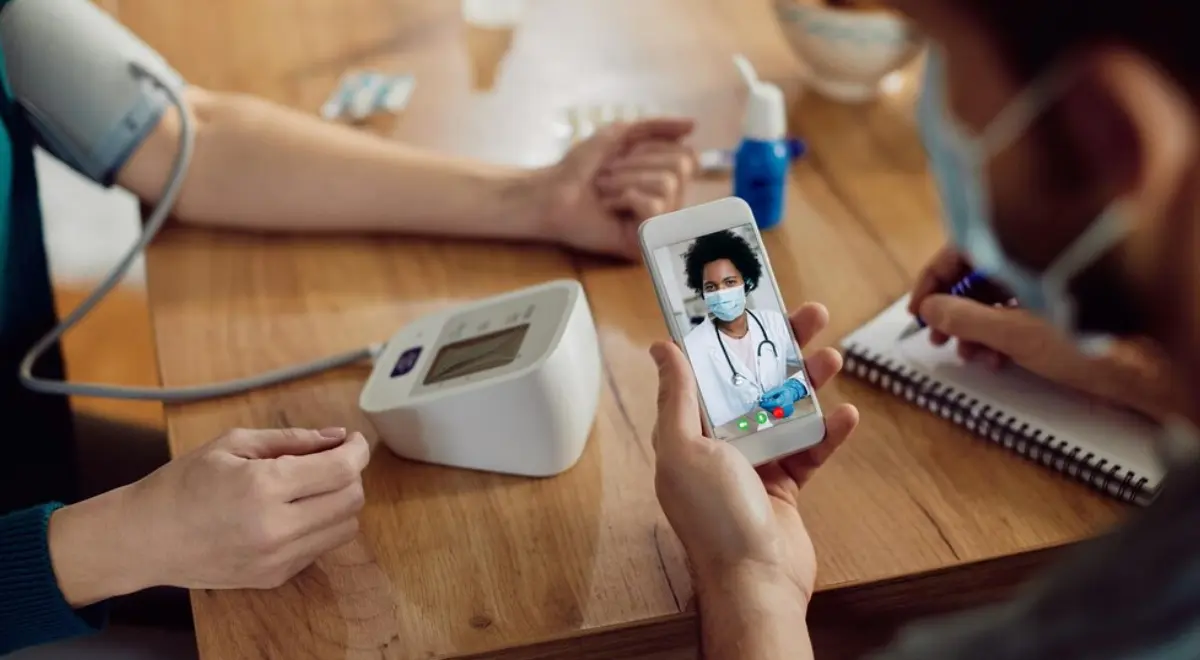Benefits of Remote Patient Monitoring – HealthArc

A Remote Patient Monitoring (RPM) system like that of HealthArc is one of the transformations of medical technology, which truly deserves the spotlight. After all, it was able to pull off what other integrative technology could not. It has set itself up as a strong candidate to be part of the norm. Its approach also served to highlight how the internet and the prevailing present-day technologies like big data can transform the medical field.
Benefits of remote patient monitoring are further highlighted by COVID-19 and its effects. It capitalizes on the ability to fulfill tasks remotely; in this case, the ability to monitor patients. A remote patient monitoring system like that of HealthArc contains all the tools necessary to conduct it.
But, what are the benefits of using HealthArc? Let’s discuss in brief the kind of advantages it has.
Table of Contents
ToggleHow Does HealthArc Remote Patient Monitoring Benefits Doctors?
1. Increases work capacity and lessen work-burden
Having the ability to handle more patients is undoubtedly one of the most compelling benefits of remote patient monitoring by HealthArc. In a hospital scenario where there’s an influx of patients, the software is nothing short of critical. It rings true for hospitals and clinics that are supported by few medical staff.
Another snowball effect is that it frees up plenty of doctor or medical personnel’s schedules. You can only imagine the stress doctors and nurses had to put into trying to treat COVID-19 cases. With an optimal Remote Patient Monitoring system in place, their schedules will correspondingly not subject them to burnouts.
In times of pandemics like COVID-19, these collapses commonly occur. This fact underlines the need to come up with solutions. Burnouts left unchecked often herald the collapse of healthcare systems, emphasizing the necessity further. Fortunately, an all-in-one Remote Patient Monitoring system like HealthArc greatly aids medical personnel in this regard.
HealthArc, our Platform, is mainly built with addressing this prevalent healthcare problem in mind, besides a host of other issues.
2. Doctors can readily acquire vital patient-data
Being able to readily and closely track the patient means greater freedom for doctors to conduct potentially life-saving medical interventions. Without a doubt, this benefit goes both ways, but plenty of doctors will undoubtedly love to have this advantage. Just ask any physician handling a patient suffering from a severe condition (like heart ailments, cancer, etc.), and they’ll surely agree. These types of critical cases call for close monitoring, and RPM affords that opportunity to doctors.
Doctors overcome hurdles like the lack of mediums to know patient data and scheduling appointments just to acquire them. As a result, doctors no longer need to let their patients stay in hospitals for long. This only frees up the hospital’s capacity, allowing them to attend to more patients.
3. Easy communication and conducting accurate diagnoses with real-time monitoring
Another perk that doctors get to enjoy involves utilizing technology to communicate with their patients. Doctors need to maintain communication lines with their patients as much as possible to boost trust and overall treatment. What serves as a better medium for achieving this than a Remote Patient Monitoring system that uses the most advanced communication tools? Imagine being reminded of patient readings anywhere and anytime it is necessary. These tools make this a reality.
Most doctors also appreciate the freedom to monitor their patients in real-time. With disease progression always accounted for, again, timely medical interventions do not have to be an impossibility.
4. Significant improvements in healthcare outcomes
Another key benefit of an RPM system is that it boosts the treatment success rate, too. This is done by making preventive care accessible and the ability to impart care anywhere. That’s just one of the compelling capabilities of RPMs. Think of this benefit as the total of all the other advantages mentioned here.
More importantly, these favorable outcomes only spare doctors and medical personnel from further emotional and mental trauma brought about by losing patients.
Also Read: Remote blood pressure monitoring guide
How Does HealthArc Remote Patient Monitoring Benefits Patients?
1. Removes the need for regular hospital trips
Since doctors can conduct patient monitoring and treatment anywhere (even if the patient is at home), you can count on Remote Patient Monitoring to lessen the need to be personally present for a check-up. For a patient with a disability that limits his motor skills, this is a boon.
This benefits the physically able patients as well. With fewer hospital trips needed, patients enjoy reduced travel expenses as well.
2. It allows patients to learn more and give ready feedback
With optimal communication tools available at hand, patients can readily ask their doctors about their conditions. It makes patient education, which is a necessary element in treatment, evermore doable. The patient needs to be involved as much as possible, after all, as this has proven to increase the success rate of treatments – regardless of the severity of the condition.
As a patient, you probably also want to always be in the know regarding anything concerning your condition. Remote patient monitoring systems shine in this. For example, HealthArc incorporates tools that transmit information to the patient as well. These are, in turn, complemented by a built-in communication system that ensures everyone involved in the treatment will be in the know about the latest happenings without any delay.
Arguably, this possibility opens up more opportunities for the patient to send feedback necessary to improve his treatment as soon as possible. It also encourages those involved in his treatment (family, friends, and health staff) to provide him with the support he needs.
3. Patients receive higher quality healthcare
We all want to get the best healthcare treatments. Remote patient monitoring systems actualize this through exceptional monitoring. Patients also get to enjoy the best of what technology has to offer after all. Knowing this, you probably won’t hesitate to say that you’ll finally have peace of mind when undergoing any type of treatment.
Conclusion
With the help of these respective advantages, having a tool like HealthArc in place directly improves the patient-doctor relationship. In other words, our RPM system creates a medical environment conducive to everyone’s needs. Schedule a demo today!
Most recent blogs
Categories
- Advanced Primary Care Management
- Behavioral Health Integration
- Cellular Remote Patient Monitoring
- Chronic Care Management
- Chronic Care Management Billing
- Chronic Care Management CPT Codes
- Chronic Care Management Program
- Chronic Care Management Software
- Digital Health Platform
- Principal Care Management
- Principal Care Management CPT Codes
- Remote Care Programs
- Remote Monitoring Devices
- Remote Patient Care
- Remote Patient Monitoring
- Remote Patient Monitoring Billing
- Remote Patient Monitoring CPT Codes
- Remote Patient Monitoring Devices
- Remote Patient Software
- Remote Therapeutic Monitoring
- Remote Therapeutic Monitoring Billing
- Remote Therapeutic Monitoring CPT Codes
- Telemedicine & RPM
- Transitional Care Management
- Transitional Care Management Billing
- Transitional Care Management CPT Codes
Related Posts
- February 21, 2025 | Read Time: 5 mins
RPM’s Role in Identifying Early Symptoms of Chronic Conditions for Prevention
- February 14, 2025 | Read Time: 4 mins
Monitoring Post-Surgical Recovery With RPM Systems
- February 10, 2025 | Read Time: 5 mins






